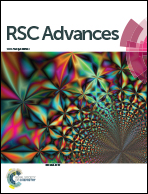Protein-concentration-dependent adsorption behaviour of inorganic layered materials
Abstract
The adsorption of six smectite clay minerals with different structures (either octahedrally or tetrahedrally substituted) and MgAl layered-double hydroxides (MgAl-LDHs) was measured at two different pH values (e.g., 2.5 and 9.5) and at different concentrations of the Bovine Serum Albumin (BSA) protein. Clays used in this study are layered materials of different ion-exchange capacities (IEC). BSA solutions were prepared at different concentrations; these were then adsorbed on the gallery of the layered materials up to saturation. The relative concentrations were systematically changed and screened to obtain the optimal adsorbance. The effects of the BSA concentration and pH on adsorption, interaction on the surface, edge, and interlayer of the materials were monitored with X-ray diffraction (XRD), transmission electron microscopy (TEM), Fourier transformed infrared spectrometry (FT-IR), and thermogravimetric analysis (TGA); the results of these analyses were discussed in detail. The clay materials revealed high adsorption capacities under static conditions; BSA was mainly adsorbed via electrostatic interactions. A correlation between the distance between the layers and the adsorbed quantity of BSA was found. Finally, our results showed that, for an optimal intercalation of BSA into the smectite clay minerals and MgAl-LDH, the layer distances must increase up to approximately 65 and 5.07 Å, respectively.


 Please wait while we load your content...
Please wait while we load your content...